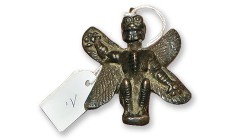The African Past for Sale: Regulatory Effects on the Illicit Market in West African Cultural Objects
Though the commoditization and circulation of West African cultural objects has been in practice since the colonial expansion of the late 19th century, the 1960s saw a surge in demand for objects like those from the Djenné, Dogon, and Tellem cultures of Mali, and for Nok terracotta sculptures of Nigeria in the 1970s. While the risks, damages, and irreparable losses at sites of looting are generally well known, less clear are the relationships between looted objects and those who study and display them.
This study seeks to understand how international legislation, academic involvement, and museum ethics, acquisition, and display have affected the illicit market in West African cultural objects. Museums have traditionally born the brunt of the legal and social ramifications of engaging in the illicit antiquities trade, whether knowingly or unknowingly, while academic actors have generally not faced the same legal suits, social pressure, or professional setbacks. These issues will be explored through the analysis of three interventions within the market to examine market composition and effect: 1) the effects of the Memorandum of Understanding (MOU) between Mali and the United States; 2) the effects of academic involvement, particularly the Oxford University Research Laboratory’s discontinuation of thermoluminescence dating on unprovenanced West African artefacts; and 3) the effects of major museum exhibitions on market demand.
Quantitative analysis of the art market in West African objects since 1970 will form the baseline evidence for this study, and research questions will be further informed through qualitative interviews and literature analysis. This research aims to provide understanding of how to better regulate the market and prevent criminal activity and social harms within educational institutions.
